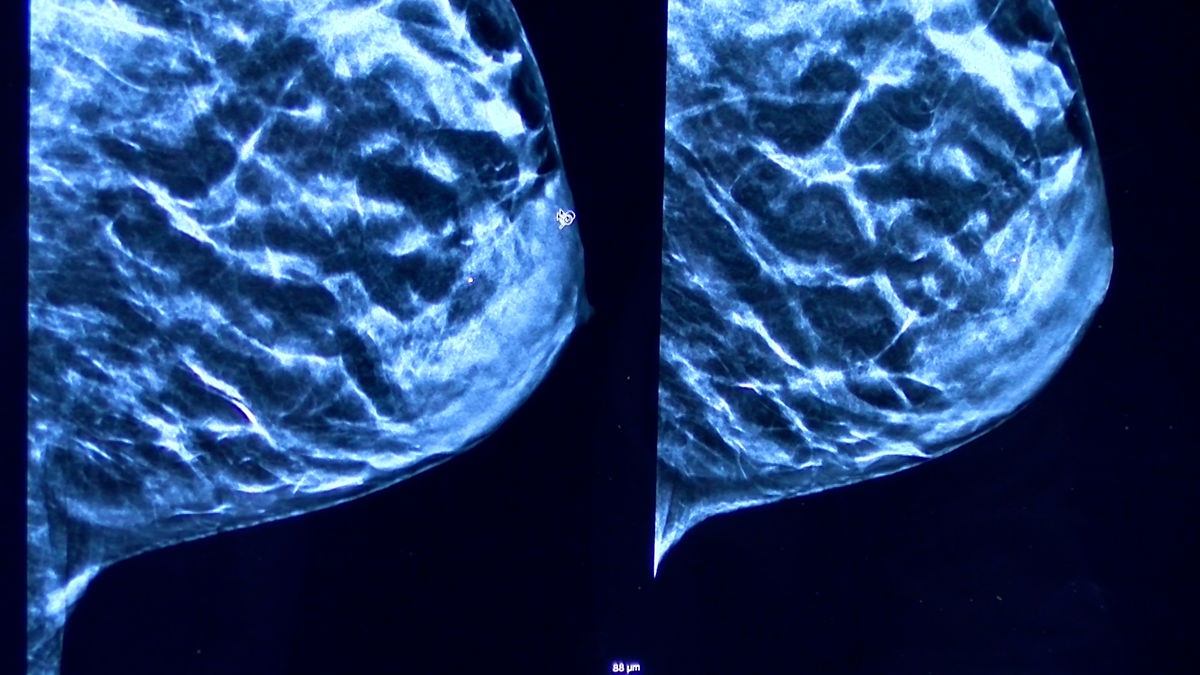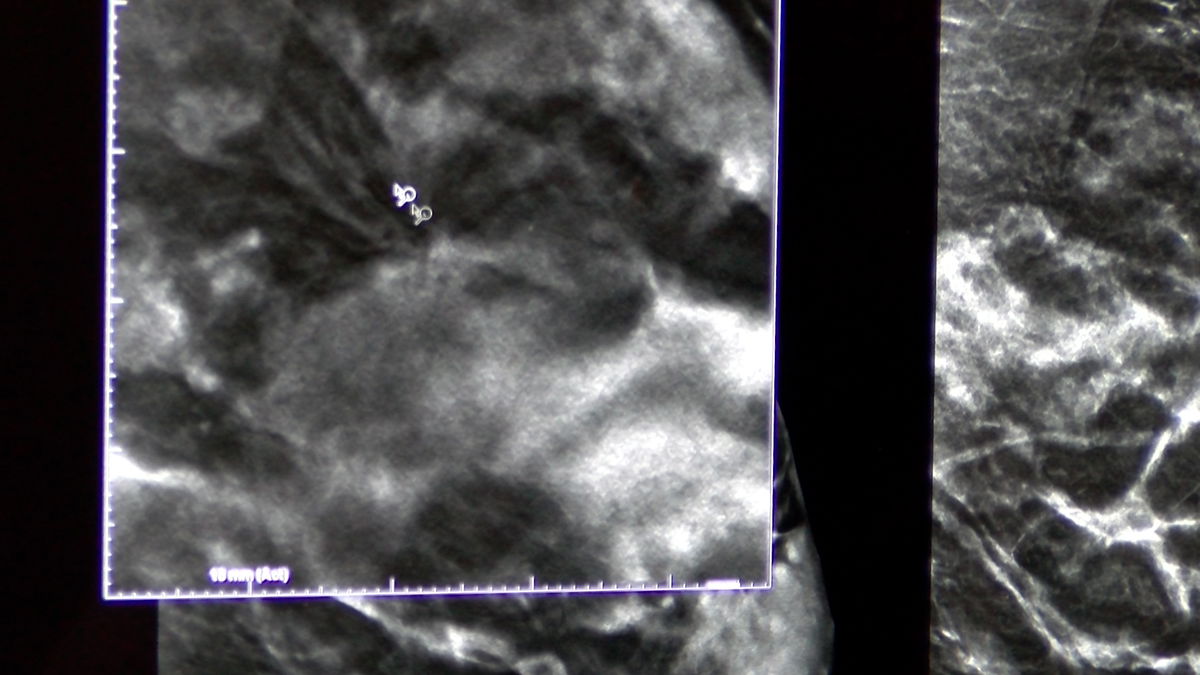New FDA rule requires mammogram reports to include information about patients’ breast density
COLUMBIA, Mo. (KMIZ)
Women with dense breast tissue are more likely to be diagnosed with breast cancer in their lifetime, according to an MU Health Care radiologist.
Diagnostic radiologist Dr. Travis Smoot said when a woman has dense breasts, it means they have more of the tissue that develops breast cancer.
He said density is the first thing he looks at when evaluating a mammogram.
"Whenever women have either heterogeneously dense breasts or dense breasts, they're at not only an increased risk for developing breast cancer, but also the sensitivity of the exam goes down," Smoot said. "That's especially true for extremely dense breasts."

There are four categories of breast density, according to the American Cancer Society:
- Category A: Fatty tissue
- Category B: Scattered dense tissue
- Category C: Heterogeneously dense
- Category D: Extremely dense
The American Cancer Society said typically, Categories C and D are considered to have dense breast tissue.
The higher the breast density, the more difficult it is for doctors like Smoot to detect early signs of cancer, such as specific line patterns and potential masses.
"It becomes much more difficult to interpret, essentially," Smoot said.
He said about 10% of people have fatty breasts, 10% have extremely dense breasts and the other 80% of people fall in the two middle categories. Density is largely determined by genetics and age, Smoot said.
As of Sept. 10, the U.S. Food and Drug Administration now requires all mammogram reports sent to patients to include information about the patient's breast density.
The official rule requires reports to indicate whether a patient's breast density is "Dense" or "Not Dense."
According to the FDA's rule, if the patient is listed as "Dense," the report must state, "Breast tissue can be either dense or not dense. Dense tissue makes it harder to find breast cancer on a mammogram and also raises the risk of developing breast cancer. Your breast tissue is dense. In some people with dense tissue, other imaging tests in addition to a mammogram may help find cancers. Talk to your healthcare provider about breast density, risks for breast cancer, and your individual situation."
If the patient is listed as "Not Dense," the report must state, "Breast tissue can be either dense or not dense. Dense tissue makes it harder to find breast cancer on a mammogram and also raises the risk of developing breast cancer. Your breast tissue is not dense. Talk to your healthcare provider about breast density, risks for breast cancer, and your individual situation."
Smoot said most doctors already sent out information about breast density to patients, but now, the phrasing is more specific to provide more detail and inform patients about additional tests.
However, Smoot said at this time, there is no logical next step for women who receive a report of "Dense."
"That's the logical progression: 'I have dense breasts, it puts me at increased risk, decreases the sensitivity of the exam and what do I do?'" Smoot said. "Well, right now, there's not anything to do differently than what an average risk woman (would do)."
Smoot explained that women determined to be at high risk of developing breast cancer in their lifetime can qualify for supplemental screening through their insurance, but anyone with an average risk and dense breast tissue likely does not.
However, he said there have been trials that show the benefits of supplemental screening for women with dense breasts and is hopeful more options will be available going forward.
"I think in the near future, MRI supplemental screening or even contrast-enhanced mammography for women with dense breasts will be a thing that's more common," Smoot said.
This is why Smoot encourages women 25 and older to do a formal risk assessment to determine if they are at high risk of getting breast cancer. If a woman is deemed high-risk, she may be able to get more supplemental screening options.
Along with a risk assessment, Smoot said the most important thing a woman can do is get an annual mammogram. He said mammograms are shown to reduce mortality by up to 40%.
After evaluating breast density in a mammogram, Smoot said he goes through a search pattern and looks for different things that might look like breast cancer.
"I think most often, people think about masses, but earlier signs of breast cancer could even be things like calcifications or something called architectural distortion," Smoot said. "So, those are the things we're looking for."

Smoot said it's important for women to understand their breast cancer risk factors and exam limitations.
